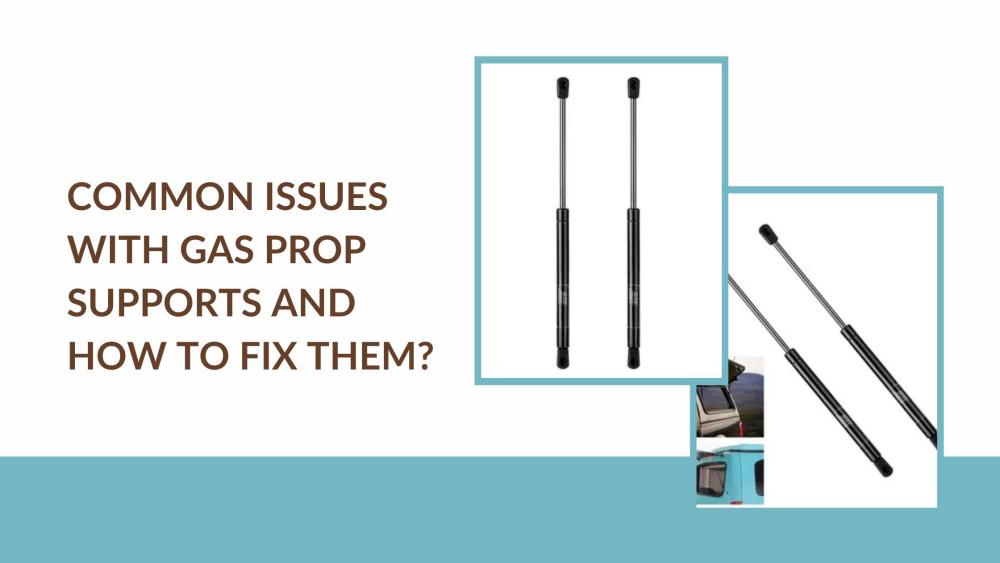
Common Issues with Gas Prop Supports and How to Fix Them?

Gas prop supports are the unsung heroes in vehicles, toolboxes, RV hatches, and even office chairs. They quietly do their job, lifting, holding, and lowering heavy panels or lids. But just like any hardworking component, they’re prone to problems over time. Whether you're a DIYer or just someone trying to avoid that sudden hatch slam, knowing how to spot and fix the issues with props can save you time, money, and some serious headaches.
Let’s dive into the most common problems and how to deal with them, quick and easy.
1. The Support Just Gave Up on You
Ever opened your car trunk and had it crash right back down? Yep, the gas props may have lost their pressure. This is probably the most common complaint. The internal gas (usually nitrogen) has leaked out, reducing the lift power. Over time, seals wear out and let the gas escape.
There’s no way to refill a prop. If it's gone soft or won’t stay up, you’ll need a replacement. Match the new one with the correct pressure rating and length. Don’t guess, use the numbers on the old one or check the specs.
2. It Moves Too Fast or Too Slow
If the lid slams down fast or takes forever to open, you’ve got a damping issue. Too little damping means it drops like a rock. Too much damping and it creeps up like it’s half-asleep. Either way, the gas prop isn’t performing right.
Check for damage or dirt on the rod. Clean it with a dry cloth. Sometimes, temperature affects performance, especially in cold weather. If cleaning doesn’t help, it’s probably time for a new one with better specs for your use.
3. It’s Leaking Fluid
Do you spot oil or fluid on the rod or around the seal? Bad news. This usually means the internal seal has failed. It may start small, but over time, the performance drops and it becomes dangerous.
Unfortunately, you can’t fix internal seal leaks. If your gas prop is leaking, replace it. Don't delay, it’s a safety risk.
4. It’s Rusty or Won’t Move at All
Stuck or corroded props are pretty common, especially if exposed to weather. Moisture and dirt can corrode the cylinder or shaft, making it jam or stiff.
Inspect the shaft. If it’s rusty, don’t force it, it might snap. You can try applying a light lubricant, but if there's serious rust or it’s completely frozen, replace it. Prevent future issues by keeping them clean and dry when possible.
5. It’s Not Installed Right
Sometimes, it’s not the gas prop, it’s the way it's installed. Installing the rod facing upward instead of down. This makes the internal seal dry out faster.
Always install the cylinder with the rod pointing down when the lid is closed. This keeps the seals lubricated and extends the life of the support.
Keep in mind, your best bet for long-lasting performance is choosing the right gas spring from the get-go and making sure it’s installed properly. That way, everything opens, holds, and closes just like it should, smooth and hassle-free.
